Edie Melson's Blog, page 404
August 11, 2014
Social Media Monday—Google Plus for Writers Part Three—Set Up Your Profile
by +EdieMelson @EdieMelson
 Even though this may seem out of order, I purposely waited to post details about the nuts and bolts of setting up a successful Google+ profile. I wanted all of us to be on the same page as to the purpose and opportunities this social media platform offers. Your profile on Google Plus—and on any platform—needs to be customized to the strengths of that specific platform.
Even though this may seem out of order, I purposely waited to post details about the nuts and bolts of setting up a successful Google+ profile. I wanted all of us to be on the same page as to the purpose and opportunities this social media platform offers. Your profile on Google Plus—and on any platform—needs to be customized to the strengths of that specific platform.
If you missed the first two posts in this series, here are the direct links:Google Plus for Writers Part One—Establish Google AuthorshipGoogle Plus for Writers Part Two—So What's Up with Circles
Set up Your Google+ Profile
If you haven’t set up a Google account, I’ll cover that at the end with a screencast. But I believe most of you already have an account, you’ll just need to tweak it to make sure you’re getting the most out of it.
 First, choose your profile picture. A few things you need to know about social media profile pics.The image needs to be a recognizable picture of you. No cartoon characters, baby pics or even pics of grandchildren. I’m glad you love your grandkids, but I’m following you because of you, not because the grandbabies are cute.The image needs to be your face, preferably smiling.The image needs to either be the same as your other social media network profile photos, or at least close enough so I can recognize it’s you by your picture. A lot of people have similar names, so name isn’t always the most reliable way to find someone on social media.
First, choose your profile picture. A few things you need to know about social media profile pics.The image needs to be a recognizable picture of you. No cartoon characters, baby pics or even pics of grandchildren. I’m glad you love your grandkids, but I’m following you because of you, not because the grandbabies are cute.The image needs to be your face, preferably smiling.The image needs to either be the same as your other social media network profile photos, or at least close enough so I can recognize it’s you by your picture. A lot of people have similar names, so name isn’t always the most reliable way to find someone on social media.
Next, choose your cover photo. This is the large, rectangular photo that goes behind your profile pic. Because it’s a wide space, you’ll need to make sure you choose and crop a photo that fits. Google+ has some generic cover photos you can use, but I don’t recommend it. The idea of this cover photo is to illustrate who you are and the things you’ll be sharing on this network. Below is a screenshot of my profile pic and cover photo.
Now you want to work on the ABOUT section of your profile. To do this, click on PROFILE on dropdown menu on the left side of your screen. Then click on ABOUT, under your profile pic (see screenshot below).
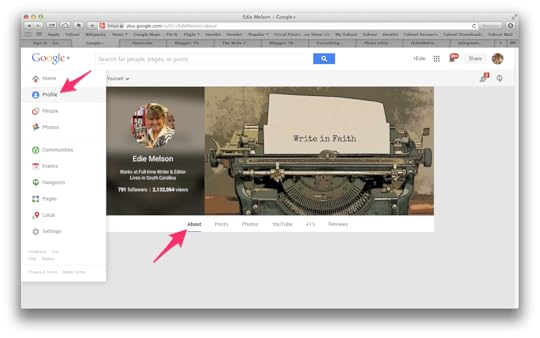
NOTE: To edit each section, scroll to the bottom of the section and click on EDIT in the bottom left corner. After you’ve made your changes, be sure to click SAVE in the bottom right corner.
We’ll begin with STORY. You’ll want to come up with a short tagline that describes who you are. I use the same one on all my networks, to help people find me (see screenshot below).
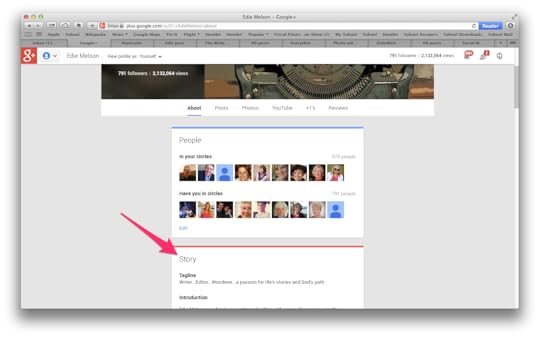
After that is your introduction. This is where your bio goes. You can also include live links in this section. I composed my bio in word and hyperlinked appropriate words. (Here’s a post on How to Use Hyperlinks if you’re unsure how to do this.)
After this you’ll find the WORK info. This is important because this is what appears under your name and profile pic on your main Google+ page.
As you scroll down, the next few sections are self-explanatory, so I’m sure you can figure them out.
The last one I want to address is the LINKS section. This is important because it ties directly into Google Authorship (I explained that in Part One of Google Plus for Writers).Other Profiles is where you add your blog(s) and other social media accounts.Contributor To is where you add the sites where you contribute content, like my Guideposts blog or Novel Rocket.Links is where you can add other links.
Update Your Settings for Privacy and NotificationsTo get to your SETTINGS, click on the drop-down menu on the left of your screen, scroll down and choose SETTINGS (see screenshot below).

NOTE: These are the settings I use to maximize my exposure without risking too much. It’s a balance and you should choose the combination of settings that you’re most comfortable with.
Who can interact with you and your posts—I chose Anyone for both scenarios.
Who can Hangout with you—I chose Hangout with you for all my circles except Everyone Else. For that I chose Invite only .
Receive Notification—I have all notifications go to my email account. You have almost infinite options for personalization here. I recommend you experiment to find the settings you like best.
Location Settings is the only other one you should be concerned about . I strongly urge you to keep your location settings turned OFF. Strangers and acquaintances do not need to know where you. If you want to share about your location, post about it. But don’t open yourself up to stalking of any kind.
These are the basics of how to set up your profile and settings for maximum visibility. Be sure to leave any questions or comments in the section below.
And don’t forget to join the conversation!Blessings,Edie
TWEETABLESAre you getting the most from your #Google+ Profile?#SocialMedia Mentor @EdieMelson shares how (Click to Tweet)
Google+ for Writers – Get the most from your profile -#SocialMedia Mentor @EdieMelson shows you how (Click to Tweet)
Set up a Google Account—Screencast
 Even though this may seem out of order, I purposely waited to post details about the nuts and bolts of setting up a successful Google+ profile. I wanted all of us to be on the same page as to the purpose and opportunities this social media platform offers. Your profile on Google Plus—and on any platform—needs to be customized to the strengths of that specific platform.
Even though this may seem out of order, I purposely waited to post details about the nuts and bolts of setting up a successful Google+ profile. I wanted all of us to be on the same page as to the purpose and opportunities this social media platform offers. Your profile on Google Plus—and on any platform—needs to be customized to the strengths of that specific platform.If you missed the first two posts in this series, here are the direct links:Google Plus for Writers Part One—Establish Google AuthorshipGoogle Plus for Writers Part Two—So What's Up with Circles
Set up Your Google+ Profile
If you haven’t set up a Google account, I’ll cover that at the end with a screencast. But I believe most of you already have an account, you’ll just need to tweak it to make sure you’re getting the most out of it.
 First, choose your profile picture. A few things you need to know about social media profile pics.The image needs to be a recognizable picture of you. No cartoon characters, baby pics or even pics of grandchildren. I’m glad you love your grandkids, but I’m following you because of you, not because the grandbabies are cute.The image needs to be your face, preferably smiling.The image needs to either be the same as your other social media network profile photos, or at least close enough so I can recognize it’s you by your picture. A lot of people have similar names, so name isn’t always the most reliable way to find someone on social media.
First, choose your profile picture. A few things you need to know about social media profile pics.The image needs to be a recognizable picture of you. No cartoon characters, baby pics or even pics of grandchildren. I’m glad you love your grandkids, but I’m following you because of you, not because the grandbabies are cute.The image needs to be your face, preferably smiling.The image needs to either be the same as your other social media network profile photos, or at least close enough so I can recognize it’s you by your picture. A lot of people have similar names, so name isn’t always the most reliable way to find someone on social media.Next, choose your cover photo. This is the large, rectangular photo that goes behind your profile pic. Because it’s a wide space, you’ll need to make sure you choose and crop a photo that fits. Google+ has some generic cover photos you can use, but I don’t recommend it. The idea of this cover photo is to illustrate who you are and the things you’ll be sharing on this network. Below is a screenshot of my profile pic and cover photo.
Now you want to work on the ABOUT section of your profile. To do this, click on PROFILE on dropdown menu on the left side of your screen. Then click on ABOUT, under your profile pic (see screenshot below).

NOTE: To edit each section, scroll to the bottom of the section and click on EDIT in the bottom left corner. After you’ve made your changes, be sure to click SAVE in the bottom right corner.
We’ll begin with STORY. You’ll want to come up with a short tagline that describes who you are. I use the same one on all my networks, to help people find me (see screenshot below).

After that is your introduction. This is where your bio goes. You can also include live links in this section. I composed my bio in word and hyperlinked appropriate words. (Here’s a post on How to Use Hyperlinks if you’re unsure how to do this.)
After this you’ll find the WORK info. This is important because this is what appears under your name and profile pic on your main Google+ page.
As you scroll down, the next few sections are self-explanatory, so I’m sure you can figure them out.
The last one I want to address is the LINKS section. This is important because it ties directly into Google Authorship (I explained that in Part One of Google Plus for Writers).Other Profiles is where you add your blog(s) and other social media accounts.Contributor To is where you add the sites where you contribute content, like my Guideposts blog or Novel Rocket.Links is where you can add other links.
Update Your Settings for Privacy and NotificationsTo get to your SETTINGS, click on the drop-down menu on the left of your screen, scroll down and choose SETTINGS (see screenshot below).

NOTE: These are the settings I use to maximize my exposure without risking too much. It’s a balance and you should choose the combination of settings that you’re most comfortable with.
Who can interact with you and your posts—I chose Anyone for both scenarios.
Who can Hangout with you—I chose Hangout with you for all my circles except Everyone Else. For that I chose Invite only .
Receive Notification—I have all notifications go to my email account. You have almost infinite options for personalization here. I recommend you experiment to find the settings you like best.
Location Settings is the only other one you should be concerned about . I strongly urge you to keep your location settings turned OFF. Strangers and acquaintances do not need to know where you. If you want to share about your location, post about it. But don’t open yourself up to stalking of any kind.
These are the basics of how to set up your profile and settings for maximum visibility. Be sure to leave any questions or comments in the section below.
And don’t forget to join the conversation!Blessings,Edie
TWEETABLESAre you getting the most from your #Google+ Profile?#SocialMedia Mentor @EdieMelson shares how (Click to Tweet)
Google+ for Writers – Get the most from your profile -#SocialMedia Mentor @EdieMelson shows you how (Click to Tweet)
Set up a Google Account—Screencast
Published on August 11, 2014 01:00
August 10, 2014
Weekend Worship—Are You Skydiving or Flying
by +EdieMelson @EdieMelson
Now to Him who is able to do far more abundantly beyond all that we ask or think, according to the power that works within us, Ephesians 3:20
 Sometimes (more often than not) I get caught up in the process of life. I’m an analytical sort of person, and I’m definitely a planner. With every project I tackle, I make plans, trying to anticipate any possible potholes and pitfalls. I build timelines and set expectations.
Sometimes (more often than not) I get caught up in the process of life. I’m an analytical sort of person, and I’m definitely a planner. With every project I tackle, I make plans, trying to anticipate any possible potholes and pitfalls. I build timelines and set expectations.
I’m also a recovering perfectionist.
For years I didn’t realize I was a perfectionist, but I definitely am. My perfectionism shows itself in strange ways. In the past it has kept me from trying anything I thought I couldn’t succeed at. For me, failure wasn’t an option. That translated into a hurdle that kept me from pursuing my dreams.
Truthfully, that issue does continue to crop up from time to time. (I can anticipate the snickers this engenders in my family and close friends as they read this.)
 In the past I’ve gone to great lengths to build in safeguards that keep failure at bay when I tackle a difficult project. I always thought of these things as packing a parachute. They’d be a built-in safety net that would keep me from crashing and burning if I hadn’t covered all the possibilities.
In the past I’ve gone to great lengths to build in safeguards that keep failure at bay when I tackle a difficult project. I always thought of these things as packing a parachute. They’d be a built-in safety net that would keep me from crashing and burning if I hadn’t covered all the possibilities.
Then one day I felt a metaphoric tap on the shoulder from the Holy Spirit. He asked me a question I’ve never forgotten.
Are you skydiving or flying?
You see God is in the business of helping us to fly. He’s not interested in skydiving, and He has no need of parachutes. Sure there are things we need to do to get ready to fly, but packing a parachute isn’t one of them. God wants us to fly free, chasing the dreams He's set into our hearts. His plan doesn't include the encumbrances of safety nets and parachute. When He's in control, they're just extra baggage that can hold us tethered to the ground.
So whatever dream you’re chasing, leave the parachute home and get ready to fly.
TWEETABLE
As you follow your dream are you planning to skydive or fly? (click to tweet)
Now to Him who is able to do far more abundantly beyond all that we ask or think, according to the power that works within us, Ephesians 3:20
 Sometimes (more often than not) I get caught up in the process of life. I’m an analytical sort of person, and I’m definitely a planner. With every project I tackle, I make plans, trying to anticipate any possible potholes and pitfalls. I build timelines and set expectations.
Sometimes (more often than not) I get caught up in the process of life. I’m an analytical sort of person, and I’m definitely a planner. With every project I tackle, I make plans, trying to anticipate any possible potholes and pitfalls. I build timelines and set expectations.I’m also a recovering perfectionist.
For years I didn’t realize I was a perfectionist, but I definitely am. My perfectionism shows itself in strange ways. In the past it has kept me from trying anything I thought I couldn’t succeed at. For me, failure wasn’t an option. That translated into a hurdle that kept me from pursuing my dreams.
Truthfully, that issue does continue to crop up from time to time. (I can anticipate the snickers this engenders in my family and close friends as they read this.)
 In the past I’ve gone to great lengths to build in safeguards that keep failure at bay when I tackle a difficult project. I always thought of these things as packing a parachute. They’d be a built-in safety net that would keep me from crashing and burning if I hadn’t covered all the possibilities.
In the past I’ve gone to great lengths to build in safeguards that keep failure at bay when I tackle a difficult project. I always thought of these things as packing a parachute. They’d be a built-in safety net that would keep me from crashing and burning if I hadn’t covered all the possibilities.Then one day I felt a metaphoric tap on the shoulder from the Holy Spirit. He asked me a question I’ve never forgotten.
Are you skydiving or flying?
You see God is in the business of helping us to fly. He’s not interested in skydiving, and He has no need of parachutes. Sure there are things we need to do to get ready to fly, but packing a parachute isn’t one of them. God wants us to fly free, chasing the dreams He's set into our hearts. His plan doesn't include the encumbrances of safety nets and parachute. When He's in control, they're just extra baggage that can hold us tethered to the ground.
So whatever dream you’re chasing, leave the parachute home and get ready to fly.
TWEETABLE
As you follow your dream are you planning to skydive or fly? (click to tweet)
Published on August 10, 2014 01:00
August 9, 2014
Social Media Image—What Mountain is Calling You?
This summer our youngest son went west to follow his heart. He signed on at Camp Timberline as a counselor and tennis coach.
And he fell in love with the Colorado Rockies.
As his mother, I hate having him so far from home, but I love watching him spread his wings and fly. Like all three of my sons, John's an inspiration to me as I watch him leave behind what's comfortable and follow his calling.
 "The mountains are calling, I must go." - John MuirNow my question to you is this.
"The mountains are calling, I must go." - John MuirNow my question to you is this.
What mountain is calling you and have you accepted the challenge?
Share your thoughts in the comment section below.
I also invite you to use this image any way you like online. Post it to your blog, share it on Facebook, Twitter, Pinterest, anywhere you'd like. All I ask is that you keep it intact, with my website watermark visible.
Don't forget to join the conversation!Blessings,Edie
And he fell in love with the Colorado Rockies.
As his mother, I hate having him so far from home, but I love watching him spread his wings and fly. Like all three of my sons, John's an inspiration to me as I watch him leave behind what's comfortable and follow his calling.
 "The mountains are calling, I must go." - John MuirNow my question to you is this.
"The mountains are calling, I must go." - John MuirNow my question to you is this.What mountain is calling you and have you accepted the challenge?
Share your thoughts in the comment section below.
I also invite you to use this image any way you like online. Post it to your blog, share it on Facebook, Twitter, Pinterest, anywhere you'd like. All I ask is that you keep it intact, with my website watermark visible.
Don't forget to join the conversation!Blessings,Edie
Published on August 09, 2014 01:00
August 8, 2014
A Place to Learn from the Experts as well as Those in the Trenches with You—Taking The Write Conversation to the Next Level
by +EdieMelson @EdieMelson
 Making a place to share the journey with other writers.Once upon a time there was a writer who loved words. And as much as she loved words, she loved other writers. Her goal was to find a place where they could share their journey, learning and growing together. That writer was me.
Making a place to share the journey with other writers.Once upon a time there was a writer who loved words. And as much as she loved words, she loved other writers. Her goal was to find a place where they could share their journey, learning and growing together. That writer was me.
From the very beginning, the focus of this blog has stayed the same.
I’ve always wanted this to be a place where writers could come to learn more about the craft and the business of writing.
 Since 2009 this blog has grownWhen I started this blog, I was barely above beginner level myself. But I was already active in the industry, and knew many of the experts. I shared what I learned from them here, and this little blog began to grow. Since 2009 it has grown a lot, and now there are over 50,000 of you who stop by each month to learn something and share your thoughts. And for that, I’m more grateful than you can imagine.
Since 2009 this blog has grownWhen I started this blog, I was barely above beginner level myself. But I was already active in the industry, and knew many of the experts. I shared what I learned from them here, and this little blog began to grow. Since 2009 it has grown a lot, and now there are over 50,000 of you who stop by each month to learn something and share your thoughts. And for that, I’m more grateful than you can imagine.
I believe the best way to show my gratitude is to take this site to the next level. I've always used what I learned through research, classes, books, and experience to share with you here. Now, I'm going straight to the source and bringing the experts themselves here.
You’ll be seeing a lot of new, regular posters here on The Write Conversation. They come in all shapes, sizes and genders. They also reflect the many different places along a writer’s journey—from industry giant to those just starting out. But I hope you'll notice that they all have two things in common: A love of writing—in all its many forms.A heart to help others grow into success.Rest assured that I’m not going anywhere, I’ll still be here.
 This will always be a place to learn about
This will always be a place to learn about
Social Media for writersI’m not giving up my Social Media Monday, and will post at least one more day (often more) every week. I’m also excited to still be able to offer guest posters the opportunity to share their thoughts. Very little content, except the authors of the posts themselves will change. This blog will continue to offer information on all aspects of writing and on the industry itself.
Here is a sneak peek at a few of those who will be joining us regularly (some have already begun):DiAnn MillsAlton GanskyCharity TinninLori HatcherJess KellerBruce BradyLynn H. BlackburnVonda SkeltonI’d love to here your thoughts about what is coming on The Write Conversation. I’d also like to know what topics you want to see covered in upcoming posts.
Don’t forget to join the conversation!Blessings,
Edie
TWEETABLESTaking it to the next level - The Write Conversation will be adding regular columnists to the existing content (Click to Tweet)
 Making a place to share the journey with other writers.Once upon a time there was a writer who loved words. And as much as she loved words, she loved other writers. Her goal was to find a place where they could share their journey, learning and growing together. That writer was me.
Making a place to share the journey with other writers.Once upon a time there was a writer who loved words. And as much as she loved words, she loved other writers. Her goal was to find a place where they could share their journey, learning and growing together. That writer was me.From the very beginning, the focus of this blog has stayed the same.
I’ve always wanted this to be a place where writers could come to learn more about the craft and the business of writing.
 Since 2009 this blog has grownWhen I started this blog, I was barely above beginner level myself. But I was already active in the industry, and knew many of the experts. I shared what I learned from them here, and this little blog began to grow. Since 2009 it has grown a lot, and now there are over 50,000 of you who stop by each month to learn something and share your thoughts. And for that, I’m more grateful than you can imagine.
Since 2009 this blog has grownWhen I started this blog, I was barely above beginner level myself. But I was already active in the industry, and knew many of the experts. I shared what I learned from them here, and this little blog began to grow. Since 2009 it has grown a lot, and now there are over 50,000 of you who stop by each month to learn something and share your thoughts. And for that, I’m more grateful than you can imagine. I believe the best way to show my gratitude is to take this site to the next level. I've always used what I learned through research, classes, books, and experience to share with you here. Now, I'm going straight to the source and bringing the experts themselves here.
You’ll be seeing a lot of new, regular posters here on The Write Conversation. They come in all shapes, sizes and genders. They also reflect the many different places along a writer’s journey—from industry giant to those just starting out. But I hope you'll notice that they all have two things in common: A love of writing—in all its many forms.A heart to help others grow into success.Rest assured that I’m not going anywhere, I’ll still be here.
 This will always be a place to learn about
This will always be a place to learn about Social Media for writersI’m not giving up my Social Media Monday, and will post at least one more day (often more) every week. I’m also excited to still be able to offer guest posters the opportunity to share their thoughts. Very little content, except the authors of the posts themselves will change. This blog will continue to offer information on all aspects of writing and on the industry itself.
Here is a sneak peek at a few of those who will be joining us regularly (some have already begun):DiAnn MillsAlton GanskyCharity TinninLori HatcherJess KellerBruce BradyLynn H. BlackburnVonda SkeltonI’d love to here your thoughts about what is coming on The Write Conversation. I’d also like to know what topics you want to see covered in upcoming posts.
Don’t forget to join the conversation!Blessings,
Edie
TWEETABLESTaking it to the next level - The Write Conversation will be adding regular columnists to the existing content (Click to Tweet)
Published on August 08, 2014 01:00
August 7, 2014
The Value in Entering Writing Contests
by Lynn H. Blackburn @LynnHBlackburn
 I’ve been writing with an eye toward publication for five years and I’ve entered several contests. Contests are great for feedback, critique, and even to help you get your name in front of an agent or an editor.
I’ve been writing with an eye toward publication for five years and I’ve entered several contests. Contests are great for feedback, critique, and even to help you get your name in front of an agent or an editor.
They can also be demoralizing. You put all that time and energy into your submission and you get nowhere. Believe me, I’ve been there.
But I am more convinced than ever that when it comes to contests, no matter where you place, you win.
I’ll use my personal contest timeline to explain.
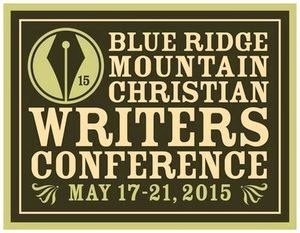 Conference Contest (2010) - I entered my first 45 pages into a contest at the Blue Ridge MountainsChristian Writers Conference. Didn’t place.
Conference Contest (2010) - I entered my first 45 pages into a contest at the Blue Ridge MountainsChristian Writers Conference. Didn’t place.
Operation First Novel (2009, 2010, 2011) - Yes, I entered the same novel three times. (I’m thick). The first two times didn’t include any feedback, so I had no way of knowing how I’d done, but the third time? Well, let’s just say those results convinced me to put that story in a drawer.
 The Frasier Contest
(2013) - The Frasier required the submission of your first scene and a synopsis. It didn’t matter that I didn’t have anything close to a complete manuscript, so I went for it.
The Frasier Contest
(2013) - The Frasier required the submission of your first scene and a synopsis. It didn’t matter that I didn’t have anything close to a complete manuscript, so I went for it.
I was a Bronze Medalist! The feedback included phrases like, “This writer is ready for publication” (I may have highlighted that one) and it encouraged me to press forward with this new story. I wrote quite a bit over the next few months. I’d gotten to the 30K mark when the next contest appeared on the horizon.
 The Search for the Killer Voice
(2014)from Love Inspired Suspense - Here’s where it gets really interesting. This contest was set up in four stages. Stage 1 - First pageStage 2 - SynopsisStage 3 - First 3 chaptersStage 4 - Full manuscript
The Search for the Killer Voice
(2014)from Love Inspired Suspense - Here’s where it gets really interesting. This contest was set up in four stages. Stage 1 - First pageStage 2 - SynopsisStage 3 - First 3 chaptersStage 4 - Full manuscript
The most important thing for you to know is that when the contest was announced in February, my home was in chaos. We’d had water damage during the winter from a burst pipe. The entire contents of my downstairs were sitting in a pod in my driveway and my kitchen appliances and cabinets were in my garage. We were walking around on subfloor and had folding chairs in the living room.
Not the ideal time to enter a writing contest.
If I hadn’t entered those other contests…if I hadn’t had a first page, and a synopsis, and a few decent chapters…I would have seen this contest and thought, well, maybe next year.
But I had a first page, and a synopsis, and a few decent chapters. I had even, three different times, sent in a full manuscript. So even though it made no sense, I hit send.
And on July 23rd, I got the call.
Love Inspired Suspense bought my book!
I know not all contests have happy endings, but if you’ve got an opportunity to put your work out there, to get some feedback, to experience what it’s like to write on a deadline—TAKE IT!
You never know where last year’s contest fail will lead.
It might help you finally put that book in the drawer and start something new.
It might fill you with the confidence to keep plugging away at your WIP.
It might even give you the courage to take on something daunting and overwhelming, because it’s not the first time you’ve walked that path.
So how about you? Are you afraid to enter a contest? Has a bad contest experience kept you from getting back in the game? Have you entered contests and been encouraged? Let’s talk about it in the comments.
Don’t forget to join the conversation!
TWEETABLES
The value of writing contests - @LynnHBlackburn shares the journey from entries to publication on @EdieMelson (Click to Tweet)
Yes, a writing contest can lead to publication - @LynnHBlackburn shares her journey on @EdieMelson (Click to Tweet)
 Lynn Huggins Blackburn has been telling herself stories since she was five and finally started writing them down. She blogs about faith, family, and her writing journey on her blog Out of the Boat. Lynn is a member of the Jerry B. Jenkins Christian Writers Guild and the Word Weavers, Greenville. She lives in South Carolina where she hangs out with three lively children, one fabulous man, and a cast of imaginary characters who find their way onto the pages of her about to be published novel. She drinks a lot of coffee.
Lynn Huggins Blackburn has been telling herself stories since she was five and finally started writing them down. She blogs about faith, family, and her writing journey on her blog Out of the Boat. Lynn is a member of the Jerry B. Jenkins Christian Writers Guild and the Word Weavers, Greenville. She lives in South Carolina where she hangs out with three lively children, one fabulous man, and a cast of imaginary characters who find their way onto the pages of her about to be published novel. She drinks a lot of coffee.
 I’ve been writing with an eye toward publication for five years and I’ve entered several contests. Contests are great for feedback, critique, and even to help you get your name in front of an agent or an editor.
I’ve been writing with an eye toward publication for five years and I’ve entered several contests. Contests are great for feedback, critique, and even to help you get your name in front of an agent or an editor. They can also be demoralizing. You put all that time and energy into your submission and you get nowhere. Believe me, I’ve been there.
But I am more convinced than ever that when it comes to contests, no matter where you place, you win.
I’ll use my personal contest timeline to explain.
 Conference Contest (2010) - I entered my first 45 pages into a contest at the Blue Ridge MountainsChristian Writers Conference. Didn’t place.
Conference Contest (2010) - I entered my first 45 pages into a contest at the Blue Ridge MountainsChristian Writers Conference. Didn’t place. Operation First Novel (2009, 2010, 2011) - Yes, I entered the same novel three times. (I’m thick). The first two times didn’t include any feedback, so I had no way of knowing how I’d done, but the third time? Well, let’s just say those results convinced me to put that story in a drawer.
 The Frasier Contest
(2013) - The Frasier required the submission of your first scene and a synopsis. It didn’t matter that I didn’t have anything close to a complete manuscript, so I went for it.
The Frasier Contest
(2013) - The Frasier required the submission of your first scene and a synopsis. It didn’t matter that I didn’t have anything close to a complete manuscript, so I went for it. I was a Bronze Medalist! The feedback included phrases like, “This writer is ready for publication” (I may have highlighted that one) and it encouraged me to press forward with this new story. I wrote quite a bit over the next few months. I’d gotten to the 30K mark when the next contest appeared on the horizon.
 The Search for the Killer Voice
(2014)from Love Inspired Suspense - Here’s where it gets really interesting. This contest was set up in four stages. Stage 1 - First pageStage 2 - SynopsisStage 3 - First 3 chaptersStage 4 - Full manuscript
The Search for the Killer Voice
(2014)from Love Inspired Suspense - Here’s where it gets really interesting. This contest was set up in four stages. Stage 1 - First pageStage 2 - SynopsisStage 3 - First 3 chaptersStage 4 - Full manuscriptThe most important thing for you to know is that when the contest was announced in February, my home was in chaos. We’d had water damage during the winter from a burst pipe. The entire contents of my downstairs were sitting in a pod in my driveway and my kitchen appliances and cabinets were in my garage. We were walking around on subfloor and had folding chairs in the living room.
Not the ideal time to enter a writing contest.
If I hadn’t entered those other contests…if I hadn’t had a first page, and a synopsis, and a few decent chapters…I would have seen this contest and thought, well, maybe next year.
But I had a first page, and a synopsis, and a few decent chapters. I had even, three different times, sent in a full manuscript. So even though it made no sense, I hit send.
And on July 23rd, I got the call.
Love Inspired Suspense bought my book!
I know not all contests have happy endings, but if you’ve got an opportunity to put your work out there, to get some feedback, to experience what it’s like to write on a deadline—TAKE IT!
You never know where last year’s contest fail will lead.
It might help you finally put that book in the drawer and start something new.
It might fill you with the confidence to keep plugging away at your WIP.
It might even give you the courage to take on something daunting and overwhelming, because it’s not the first time you’ve walked that path.
So how about you? Are you afraid to enter a contest? Has a bad contest experience kept you from getting back in the game? Have you entered contests and been encouraged? Let’s talk about it in the comments.
Don’t forget to join the conversation!
TWEETABLES
The value of writing contests - @LynnHBlackburn shares the journey from entries to publication on @EdieMelson (Click to Tweet)
Yes, a writing contest can lead to publication - @LynnHBlackburn shares her journey on @EdieMelson (Click to Tweet)
 Lynn Huggins Blackburn has been telling herself stories since she was five and finally started writing them down. She blogs about faith, family, and her writing journey on her blog Out of the Boat. Lynn is a member of the Jerry B. Jenkins Christian Writers Guild and the Word Weavers, Greenville. She lives in South Carolina where she hangs out with three lively children, one fabulous man, and a cast of imaginary characters who find their way onto the pages of her about to be published novel. She drinks a lot of coffee.
Lynn Huggins Blackburn has been telling herself stories since she was five and finally started writing them down. She blogs about faith, family, and her writing journey on her blog Out of the Boat. Lynn is a member of the Jerry B. Jenkins Christian Writers Guild and the Word Weavers, Greenville. She lives in South Carolina where she hangs out with three lively children, one fabulous man, and a cast of imaginary characters who find their way onto the pages of her about to be published novel. She drinks a lot of coffee.
Published on August 07, 2014 01:00
August 6, 2014
My Writing Process
by +LynetteEason @LynetteEason
 When Edie asked me to post on her blog, my mind went blank. I was like, “Um…so what do I write about?”
When Edie asked me to post on her blog, my mind went blank. I was like, “Um…so what do I write about?”
Edie: “Writing?”
Me: “Oh, that. I can probably do that.”
Edie: “Yeah, I figured you might be able to.”
So, here I am, writing about the topic of writing. The problem with THAT is choosing a subtopic. LOL.
So here it goes.
I get asked all the time, “How do you plot your stories? Where do you get your ideas? Why did you choose that theme for that book? Why did your character do such and so?”
Those kinds of questions make me stop and think because my first response is that I have no idea.
But when I stopped to think about it, at this point in my career, I kind of do have an idea.For the most part, I write by the seat of my pants. I don’t think much about the writing process as a whole because I’m what I’ll call an instinctive writer . Unfortunately, this doesn’t help much when I want to explain why I do things the way I do them because I don’t really know why I do them the way I do them, I just dothem. Did you get all that?
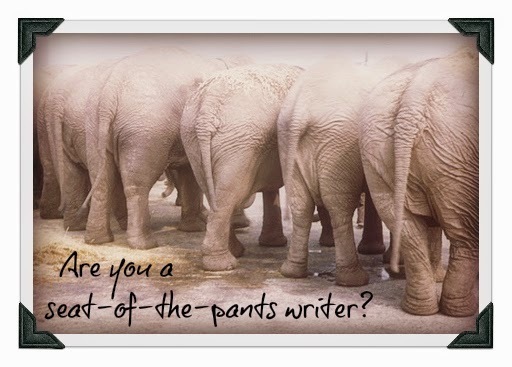 But I wanted to address the whole concept of being a
seat of the pants
writer – also known as a
pantser
. I started writing because I LOVE to read. But some stories that I read left me shaking my head in disgust and thinking, “I would NOT have written it that way.” Fast forward to 1999. I had this story in my head and decided to try my hand at the whole writing thing. So one night, I pulled out my old, very old, laptop and got started. I didn’t know a thing about the writing process. All I knew is that I wanted to write a story. So I did.
But I wanted to address the whole concept of being a
seat of the pants
writer – also known as a
pantser
. I started writing because I LOVE to read. But some stories that I read left me shaking my head in disgust and thinking, “I would NOT have written it that way.” Fast forward to 1999. I had this story in my head and decided to try my hand at the whole writing thing. So one night, I pulled out my old, very old, laptop and got started. I didn’t know a thing about the writing process. All I knew is that I wanted to write a story. So I did.
I started at the beginning and wrote all 80,000 words in about six months. I didn’t know about writers conferences or writing books or head hopping or passive writing. I just told the story. And frankly, the story itself was a pretty good one. It was just the writing that stunk. But I learned something from that experience. I did something a lot of people only dream about. I wrote a book. It had a beginning, a middle and an end. And while that was probably the only good thing about it, it was done. Seat of the pants style.
So, how about you? Are you a seat of the pants writer or an outliner? Or both? What’s your writing style like?
Don’t forget to join the conversation!
Lynette
TWEETABLES
Take a sneak peek at the writing process of best-selling author @LynetteEason on @EdieMelson (Click to Tweet)
Does it matter if you're a seat-of-the-pants writer, an outliner or something in-between? - via @LynetteEason (Click to Tweet)
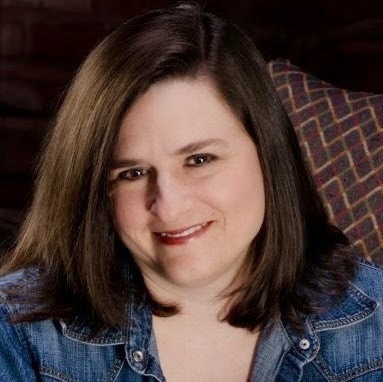 Lynette Eason is the best selling, award winning author of the Women of Justice Series and the Deadly Reunions series. Since 2007, she has written/contracted thirty-six books. Currently, she writes for Revell and Harlequin’s Love Inspired Suspense line. Her books have appeared on the CBA and ECPA bestseller lists. She has won several awards including the 2013 Carol Award for WHEN A HEART STOPS. Lynette teaches at writing conferences all over the country. She is a member of American Christian Fiction Writers (ACFW) and Romance Writers of America (RWA). Lynette can be found online at www.lynetteeason.com and www.facebook.com/lynette.eason and @lynetteeason on Twitter.
Lynette Eason is the best selling, award winning author of the Women of Justice Series and the Deadly Reunions series. Since 2007, she has written/contracted thirty-six books. Currently, she writes for Revell and Harlequin’s Love Inspired Suspense line. Her books have appeared on the CBA and ECPA bestseller lists. She has won several awards including the 2013 Carol Award for WHEN A HEART STOPS. Lynette teaches at writing conferences all over the country. She is a member of American Christian Fiction Writers (ACFW) and Romance Writers of America (RWA). Lynette can be found online at www.lynetteeason.com and www.facebook.com/lynette.eason and @lynetteeason on Twitter.
 When Edie asked me to post on her blog, my mind went blank. I was like, “Um…so what do I write about?”
When Edie asked me to post on her blog, my mind went blank. I was like, “Um…so what do I write about?”Edie: “Writing?”
Me: “Oh, that. I can probably do that.”
Edie: “Yeah, I figured you might be able to.”
So, here I am, writing about the topic of writing. The problem with THAT is choosing a subtopic. LOL.
So here it goes.
I get asked all the time, “How do you plot your stories? Where do you get your ideas? Why did you choose that theme for that book? Why did your character do such and so?”
Those kinds of questions make me stop and think because my first response is that I have no idea.
But when I stopped to think about it, at this point in my career, I kind of do have an idea.For the most part, I write by the seat of my pants. I don’t think much about the writing process as a whole because I’m what I’ll call an instinctive writer . Unfortunately, this doesn’t help much when I want to explain why I do things the way I do them because I don’t really know why I do them the way I do them, I just dothem. Did you get all that?
 But I wanted to address the whole concept of being a
seat of the pants
writer – also known as a
pantser
. I started writing because I LOVE to read. But some stories that I read left me shaking my head in disgust and thinking, “I would NOT have written it that way.” Fast forward to 1999. I had this story in my head and decided to try my hand at the whole writing thing. So one night, I pulled out my old, very old, laptop and got started. I didn’t know a thing about the writing process. All I knew is that I wanted to write a story. So I did.
But I wanted to address the whole concept of being a
seat of the pants
writer – also known as a
pantser
. I started writing because I LOVE to read. But some stories that I read left me shaking my head in disgust and thinking, “I would NOT have written it that way.” Fast forward to 1999. I had this story in my head and decided to try my hand at the whole writing thing. So one night, I pulled out my old, very old, laptop and got started. I didn’t know a thing about the writing process. All I knew is that I wanted to write a story. So I did. I started at the beginning and wrote all 80,000 words in about six months. I didn’t know about writers conferences or writing books or head hopping or passive writing. I just told the story. And frankly, the story itself was a pretty good one. It was just the writing that stunk. But I learned something from that experience. I did something a lot of people only dream about. I wrote a book. It had a beginning, a middle and an end. And while that was probably the only good thing about it, it was done. Seat of the pants style.
So, how about you? Are you a seat of the pants writer or an outliner? Or both? What’s your writing style like?
Don’t forget to join the conversation!
Lynette
TWEETABLES
Take a sneak peek at the writing process of best-selling author @LynetteEason on @EdieMelson (Click to Tweet)
Does it matter if you're a seat-of-the-pants writer, an outliner or something in-between? - via @LynetteEason (Click to Tweet)
 Lynette Eason is the best selling, award winning author of the Women of Justice Series and the Deadly Reunions series. Since 2007, she has written/contracted thirty-six books. Currently, she writes for Revell and Harlequin’s Love Inspired Suspense line. Her books have appeared on the CBA and ECPA bestseller lists. She has won several awards including the 2013 Carol Award for WHEN A HEART STOPS. Lynette teaches at writing conferences all over the country. She is a member of American Christian Fiction Writers (ACFW) and Romance Writers of America (RWA). Lynette can be found online at www.lynetteeason.com and www.facebook.com/lynette.eason and @lynetteeason on Twitter.
Lynette Eason is the best selling, award winning author of the Women of Justice Series and the Deadly Reunions series. Since 2007, she has written/contracted thirty-six books. Currently, she writes for Revell and Harlequin’s Love Inspired Suspense line. Her books have appeared on the CBA and ECPA bestseller lists. She has won several awards including the 2013 Carol Award for WHEN A HEART STOPS. Lynette teaches at writing conferences all over the country. She is a member of American Christian Fiction Writers (ACFW) and Romance Writers of America (RWA). Lynette can be found online at www.lynetteeason.com and www.facebook.com/lynette.eason and @lynetteeason on Twitter.
Published on August 06, 2014 01:00
August 5, 2014
Indie Tuesday—Making Sense of a Bad Critique
by Jessica Keller @AuthorKeller
 Conference season is upon us. Some people have recently returned home from the RWA Conference and many are gearing up for the ACFW Conference. These events bring a whirlwind of emotions. Elation from finding people who completely understand you to holding in tears as you glance over a hurtful paid critique or after feeling like you totally bombed an agent/editor appointment.
Conference season is upon us. Some people have recently returned home from the RWA Conference and many are gearing up for the ACFW Conference. These events bring a whirlwind of emotions. Elation from finding people who completely understand you to holding in tears as you glance over a hurtful paid critique or after feeling like you totally bombed an agent/editor appointment.
I’m here to offer encouragement for the latter.
 Three years ago, I walked into my first writer’s conference. I sat down for my first ever agent appointment. She asked to see my first chapter and she mayberead the first three sentences before looking back at me and saying, “You have good ideas, but if this is your best writing, I don’t see publishing in your future.”
Three years ago, I walked into my first writer’s conference. I sat down for my first ever agent appointment. She asked to see my first chapter and she mayberead the first three sentences before looking back at me and saying, “You have good ideas, but if this is your best writing, I don’t see publishing in your future.”
I had two options. I could allow that agent’s feedback to kill my dream, or I could use that feedback as a challenge. I chose the latter (but did let myself have a good cry first!). I stuck the old manuscript in a drawer, and pulled out four recently published CBA books. I gave myself one month to read them all, mapping out their plots as I went. I took what I’d learned and wrote a whole new story.
But—sadly— that wasn’t the end of the criticism for my pre-published soul. Confident with my new manuscript, I paid for a critique from an author at my next conference and chose appointments with some tough-cookie agents.
The author laughed at my plot during our appointment. She laughed and made fun of my story. I’m not kidding. And one of the agents told me that the story wasn’t believable and couldn’t happen (which was funny, seeing as I know people that have had the same journey in their real life love story). Thankfully, I didn’t let these critiques hurt me (as much).

I didn’t let their words stop me from entering the story in some competitions and sending it out to agents. Learning from criticism paid off. I won first in every contest I entered with my new manuscript and I had offers of representation from all three agents I sent proposals to. All in less than four months since the day an agent told me she didn’t see a future for me.
The best news? That manuscript that I wrote…ending up being my debut novel, Home for Good . And one of my terrible paid critiques? That was the first chapter for my second traditionally published book (which released this month!) The Widower’s Second Chance .
So hold that chin up. Trust in the path God leads you on. And continue working hard. Keep learning and improving your craft. Criticism can be a very good thing. Most of all—we just have to get used to it because it never, ever goes away (hello one star reviews!).
TWEETABLES
Down after receiving a bad critique? @AuthorKeller offers some encouragement. #amwriting #publishing #writerslife (Click to Tweet)
@AuthorKeller shares what to do after receiving a bad critique at a Writer's Conference. #publishing #writerslife (Click to Tweet)
_______________________
Indulge me in celebrating my latest release? The Widower’s Second Chance released on August first and it kicks off a new series for me called Goose Harbor. It takes place in a fictional tourist town on the picturesque shores of Lake Michigan, MI. Today I’m going to give a copy of the book away—just leave a comment and you’ll be entered in the giveaway.
The Widower's Second Chance
 Learning To Love…Again.
Learning To Love…Again.
Idyllic Goose Harbor, Michigan, offers a fresh start for broken-hearted Paige Windom. In addition to securing a teaching job at the high school, she'll fulfill her dream of helping at-risk teens in a nearby inner-city mentoring program. But Caleb Beck, a handsome yet overprotective widower and the center's founder, doesn't want Paige anywhere near the place. He's afraid she'll get hurt—just like his late wife. Paige knows she can do a lot of good—for the kids and Caleb himself. If only she can show him how to let go of his fear, maybe they'll both find a way to reopen their wounded hearts.
Goose Harbor: Love is in big supply on the shores of Lake Michigan.
Available from Amazon, Barnes & Noble, Harlequin.
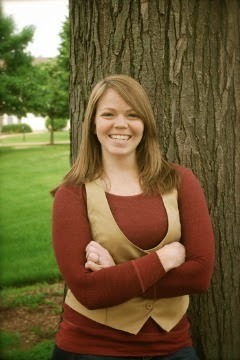 Jessica Keller holds degrees in both Communications and Biblical Studies. She is multi-published in both Young Adult Fiction and Inspirational Romance and has 100+ magazine and newspaper articles to her name. Her latest Indie release is a Young Adult Fantasy -
Saving Yesterday
. You can find her at www.JessicaKellerBooks.com, on Twitter @AuthorKeller, on Tumblr, or on her Facebook Author Page. She lives in the Chicagoland suburbs with her amazing husband, beautiful daughter, and two annoyingly outgoing cats that happen to be named after superheroes.
Jessica Keller holds degrees in both Communications and Biblical Studies. She is multi-published in both Young Adult Fiction and Inspirational Romance and has 100+ magazine and newspaper articles to her name. Her latest Indie release is a Young Adult Fantasy -
Saving Yesterday
. You can find her at www.JessicaKellerBooks.com, on Twitter @AuthorKeller, on Tumblr, or on her Facebook Author Page. She lives in the Chicagoland suburbs with her amazing husband, beautiful daughter, and two annoyingly outgoing cats that happen to be named after superheroes.
 Conference season is upon us. Some people have recently returned home from the RWA Conference and many are gearing up for the ACFW Conference. These events bring a whirlwind of emotions. Elation from finding people who completely understand you to holding in tears as you glance over a hurtful paid critique or after feeling like you totally bombed an agent/editor appointment.
Conference season is upon us. Some people have recently returned home from the RWA Conference and many are gearing up for the ACFW Conference. These events bring a whirlwind of emotions. Elation from finding people who completely understand you to holding in tears as you glance over a hurtful paid critique or after feeling like you totally bombed an agent/editor appointment.I’m here to offer encouragement for the latter.
 Three years ago, I walked into my first writer’s conference. I sat down for my first ever agent appointment. She asked to see my first chapter and she mayberead the first three sentences before looking back at me and saying, “You have good ideas, but if this is your best writing, I don’t see publishing in your future.”
Three years ago, I walked into my first writer’s conference. I sat down for my first ever agent appointment. She asked to see my first chapter and she mayberead the first three sentences before looking back at me and saying, “You have good ideas, but if this is your best writing, I don’t see publishing in your future.”I had two options. I could allow that agent’s feedback to kill my dream, or I could use that feedback as a challenge. I chose the latter (but did let myself have a good cry first!). I stuck the old manuscript in a drawer, and pulled out four recently published CBA books. I gave myself one month to read them all, mapping out their plots as I went. I took what I’d learned and wrote a whole new story.
But—sadly— that wasn’t the end of the criticism for my pre-published soul. Confident with my new manuscript, I paid for a critique from an author at my next conference and chose appointments with some tough-cookie agents.
The author laughed at my plot during our appointment. She laughed and made fun of my story. I’m not kidding. And one of the agents told me that the story wasn’t believable and couldn’t happen (which was funny, seeing as I know people that have had the same journey in their real life love story). Thankfully, I didn’t let these critiques hurt me (as much).

I didn’t let their words stop me from entering the story in some competitions and sending it out to agents. Learning from criticism paid off. I won first in every contest I entered with my new manuscript and I had offers of representation from all three agents I sent proposals to. All in less than four months since the day an agent told me she didn’t see a future for me.
The best news? That manuscript that I wrote…ending up being my debut novel, Home for Good . And one of my terrible paid critiques? That was the first chapter for my second traditionally published book (which released this month!) The Widower’s Second Chance .
So hold that chin up. Trust in the path God leads you on. And continue working hard. Keep learning and improving your craft. Criticism can be a very good thing. Most of all—we just have to get used to it because it never, ever goes away (hello one star reviews!).
TWEETABLES
Down after receiving a bad critique? @AuthorKeller offers some encouragement. #amwriting #publishing #writerslife (Click to Tweet)
@AuthorKeller shares what to do after receiving a bad critique at a Writer's Conference. #publishing #writerslife (Click to Tweet)
_______________________
Indulge me in celebrating my latest release? The Widower’s Second Chance released on August first and it kicks off a new series for me called Goose Harbor. It takes place in a fictional tourist town on the picturesque shores of Lake Michigan, MI. Today I’m going to give a copy of the book away—just leave a comment and you’ll be entered in the giveaway.
The Widower's Second Chance
 Learning To Love…Again.
Learning To Love…Again. Idyllic Goose Harbor, Michigan, offers a fresh start for broken-hearted Paige Windom. In addition to securing a teaching job at the high school, she'll fulfill her dream of helping at-risk teens in a nearby inner-city mentoring program. But Caleb Beck, a handsome yet overprotective widower and the center's founder, doesn't want Paige anywhere near the place. He's afraid she'll get hurt—just like his late wife. Paige knows she can do a lot of good—for the kids and Caleb himself. If only she can show him how to let go of his fear, maybe they'll both find a way to reopen their wounded hearts.
Goose Harbor: Love is in big supply on the shores of Lake Michigan.
Available from Amazon, Barnes & Noble, Harlequin.
 Jessica Keller holds degrees in both Communications and Biblical Studies. She is multi-published in both Young Adult Fiction and Inspirational Romance and has 100+ magazine and newspaper articles to her name. Her latest Indie release is a Young Adult Fantasy -
Saving Yesterday
. You can find her at www.JessicaKellerBooks.com, on Twitter @AuthorKeller, on Tumblr, or on her Facebook Author Page. She lives in the Chicagoland suburbs with her amazing husband, beautiful daughter, and two annoyingly outgoing cats that happen to be named after superheroes.
Jessica Keller holds degrees in both Communications and Biblical Studies. She is multi-published in both Young Adult Fiction and Inspirational Romance and has 100+ magazine and newspaper articles to her name. Her latest Indie release is a Young Adult Fantasy -
Saving Yesterday
. You can find her at www.JessicaKellerBooks.com, on Twitter @AuthorKeller, on Tumblr, or on her Facebook Author Page. She lives in the Chicagoland suburbs with her amazing husband, beautiful daughter, and two annoyingly outgoing cats that happen to be named after superheroes.
Published on August 05, 2014 01:00
August 4, 2014
Social Media Monday—Google Plus for Writers Part Two—So What’s Up with Circles?
by +EdieMelson @EdieMelson
 Friends…
Friends…
Followers…
Pins…
Circles…The list of new vocabulary words within the context of social media just go on and on and on. The words are—for the most part—familiar. But the meanings have changed. Even for those of us familiar with social media terminology it’s an ever-changing landscape. To today I’m going to tackle the basis for Google+ and explain what’s up with circles.CIRCLES is the way Google+ defines connections.
 At first it seems an odd choice, but as I became more familiar with this social networking platform, the word made sense. Google+, more than any other platform, utilizes interests, topics and passions to help its users make connections.
At first it seems an odd choice, but as I became more familiar with this social networking platform, the word made sense. Google+, more than any other platform, utilizes interests, topics and passions to help its users make connections.
Google+ has given us more control over how we classify our networks through circles. We don’t simply have to friend someone or follow them. With this network we can decide when, where and how we interact with our connections.
This difference is key and it’s intuitive, at least for me. I already group the people I interact with into categories. I have church friends, family, writing buddies, editors and agents I interact with, as well as many other. True, some fit in multiple categories, but even that is possible with Google+ Circles.
connections. For my way of thinking, this is a cleaner interface. It just makes sense.
Another thing I love about Google+ Circles is the fact that while Google+ gets you started with some default circles, you can add any you wish. For example, I added Editors and Agents, Crit Group and Followers. I even added a circle for Don’t Want to See. I can put people in this group that I feel obligated to add, but don’t want to interact with.
Here’s how to access your circles.
Go to your profile on Google+ and click on PEOPLE from the vertical menu on the left side of your screen (see screenshot below).
 Now click on YOUR CIRCLES. From this page you can do several things (see screenshot below). First, you can add circles by clicking on the circle with a plus sign in it. You can also change how you see people (I have it so I see people by their last names).
Now click on YOUR CIRCLES. From this page you can do several things (see screenshot below). First, you can add circles by clicking on the circle with a plus sign in it. You can also change how you see people (I have it so I see people by their last names).

I know it seems like I jumped way ahead in my series on Google Plus, but I wanted you to have a good idea about why I like this network before you obligated yourself to joining it. So next week we’ll back-track a bit and I’ll share how to set up a Google+ account, including how to add a cover image.
For now, I’d love to answer any questions you have about Circles in Google+. I’d also love to know what circle classifications you have for your own networks.
Don’t forget to join the conversation!Blessings,Edie
TWEETABLESGoogle+ for Writers – So What’s Up with Circles? #SocialMedia Mentor @EdieMelson shares info you need (Click to Tweet)
Google+ for Writers – Learn how to navigate Google+ circles with #SocialMedia Mentor @EdieMelson (Click to Tweet)
 Friends…
Friends…Followers…
Pins…
Circles…The list of new vocabulary words within the context of social media just go on and on and on. The words are—for the most part—familiar. But the meanings have changed. Even for those of us familiar with social media terminology it’s an ever-changing landscape. To today I’m going to tackle the basis for Google+ and explain what’s up with circles.CIRCLES is the way Google+ defines connections.
 At first it seems an odd choice, but as I became more familiar with this social networking platform, the word made sense. Google+, more than any other platform, utilizes interests, topics and passions to help its users make connections.
At first it seems an odd choice, but as I became more familiar with this social networking platform, the word made sense. Google+, more than any other platform, utilizes interests, topics and passions to help its users make connections.Google+ has given us more control over how we classify our networks through circles. We don’t simply have to friend someone or follow them. With this network we can decide when, where and how we interact with our connections.
This difference is key and it’s intuitive, at least for me. I already group the people I interact with into categories. I have church friends, family, writing buddies, editors and agents I interact with, as well as many other. True, some fit in multiple categories, but even that is possible with Google+ Circles.
connections. For my way of thinking, this is a cleaner interface. It just makes sense.
Another thing I love about Google+ Circles is the fact that while Google+ gets you started with some default circles, you can add any you wish. For example, I added Editors and Agents, Crit Group and Followers. I even added a circle for Don’t Want to See. I can put people in this group that I feel obligated to add, but don’t want to interact with.
Here’s how to access your circles.
Go to your profile on Google+ and click on PEOPLE from the vertical menu on the left side of your screen (see screenshot below).
 Now click on YOUR CIRCLES. From this page you can do several things (see screenshot below). First, you can add circles by clicking on the circle with a plus sign in it. You can also change how you see people (I have it so I see people by their last names).
Now click on YOUR CIRCLES. From this page you can do several things (see screenshot below). First, you can add circles by clicking on the circle with a plus sign in it. You can also change how you see people (I have it so I see people by their last names). 
I know it seems like I jumped way ahead in my series on Google Plus, but I wanted you to have a good idea about why I like this network before you obligated yourself to joining it. So next week we’ll back-track a bit and I’ll share how to set up a Google+ account, including how to add a cover image.
For now, I’d love to answer any questions you have about Circles in Google+. I’d also love to know what circle classifications you have for your own networks.
Don’t forget to join the conversation!Blessings,Edie
TWEETABLESGoogle+ for Writers – So What’s Up with Circles? #SocialMedia Mentor @EdieMelson shares info you need (Click to Tweet)
Google+ for Writers – Learn how to navigate Google+ circles with #SocialMedia Mentor @EdieMelson (Click to Tweet)
Published on August 04, 2014 01:00
August 3, 2014
Weekend Worship—Planting Seeds
I planted the seed. Apollos watered it. But God made it grow. I Corinthians 3:6
 I’ve talked with a lot of writers through the years. One recurring question I get is about where they should focus their efforts. They struggle with whether to submit this article, write this devotion, try authoring a book. I encourage them to try it all.
I’ve talked with a lot of writers through the years. One recurring question I get is about where they should focus their efforts. They struggle with whether to submit this article, write this devotion, try authoring a book. I encourage them to try it all.
My answer generally catches them by surprise.
I take a different approach when it comes to the decision of what to write about. I approach it like a farmer sowing seeds. I’ve never seen a farmer pull out a handful of seeds, search through them and choose only one or two to plant.
What I’ve seen is farmers sowing handfuls of seeds at a time, casting them into the prepared soil. They do this knowing that not all seeds take root and grow. As writers, we would do well to follow this model.
 I’m not advocating that writers start a dozen different things without finishing any. I’m not even suggesting that a writer certain of where she’s called, move too far away from that. But I am telling you that although we make plans—in obedience—God decides what grows. And it only makes sense to walk through the doors that seem to have been opened.
I’m not advocating that writers start a dozen different things without finishing any. I’m not even suggesting that a writer certain of where she’s called, move too far away from that. But I am telling you that although we make plans—in obedience—God decides what grows. And it only makes sense to walk through the doors that seem to have been opened.
So take a chance, toss those seeds out. You may be surprised by what takes root and grows into a harvest.
 I’ve talked with a lot of writers through the years. One recurring question I get is about where they should focus their efforts. They struggle with whether to submit this article, write this devotion, try authoring a book. I encourage them to try it all.
I’ve talked with a lot of writers through the years. One recurring question I get is about where they should focus their efforts. They struggle with whether to submit this article, write this devotion, try authoring a book. I encourage them to try it all.My answer generally catches them by surprise.
I take a different approach when it comes to the decision of what to write about. I approach it like a farmer sowing seeds. I’ve never seen a farmer pull out a handful of seeds, search through them and choose only one or two to plant.
What I’ve seen is farmers sowing handfuls of seeds at a time, casting them into the prepared soil. They do this knowing that not all seeds take root and grow. As writers, we would do well to follow this model.
 I’m not advocating that writers start a dozen different things without finishing any. I’m not even suggesting that a writer certain of where she’s called, move too far away from that. But I am telling you that although we make plans—in obedience—God decides what grows. And it only makes sense to walk through the doors that seem to have been opened.
I’m not advocating that writers start a dozen different things without finishing any. I’m not even suggesting that a writer certain of where she’s called, move too far away from that. But I am telling you that although we make plans—in obedience—God decides what grows. And it only makes sense to walk through the doors that seem to have been opened.So take a chance, toss those seeds out. You may be surprised by what takes root and grows into a harvest.
Published on August 03, 2014 01:00
August 2, 2014
Social Media Image—Finding Time to Hear the Whispers of Other Worlds
As writers, it's so important for us to make time to listen and let those
other worlds
speak to us.
I'd love to hear your tips on how you guard/carve out that time in your life?
 "There are times when we stop, we sit still. We listen and a
"There are times when we stop, we sit still. We listen and a
whole other world begins to whisper." -James CarrollShare your thoughts in the comment section below.
I also invite you to use this image any way you like online. Post it to your blog, share it on Facebook, Twitter, Pinterest, anywhere you'd like. All I ask is that you keep it intact, with my website watermark visible.
Don't forget to join the conversation!Blessings,Edie
I'd love to hear your tips on how you guard/carve out that time in your life?
 "There are times when we stop, we sit still. We listen and a
"There are times when we stop, we sit still. We listen and a whole other world begins to whisper." -James CarrollShare your thoughts in the comment section below.
I also invite you to use this image any way you like online. Post it to your blog, share it on Facebook, Twitter, Pinterest, anywhere you'd like. All I ask is that you keep it intact, with my website watermark visible.
Don't forget to join the conversation!Blessings,Edie
Published on August 02, 2014 01:00



